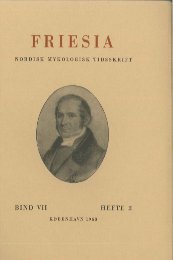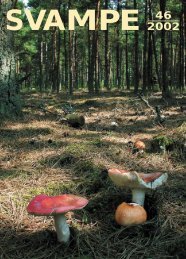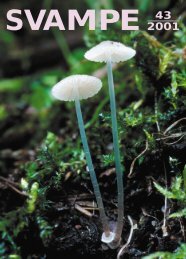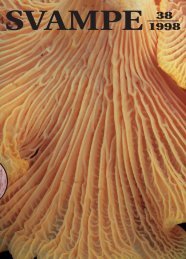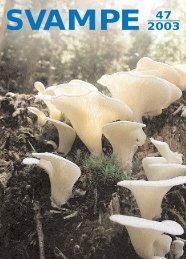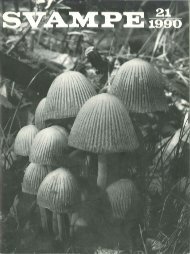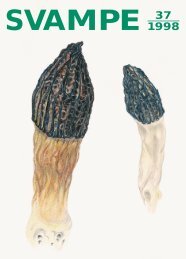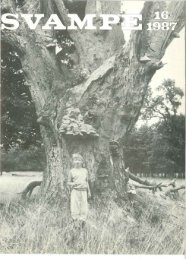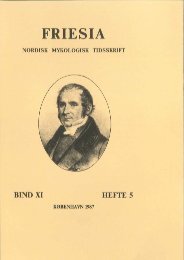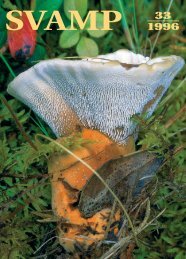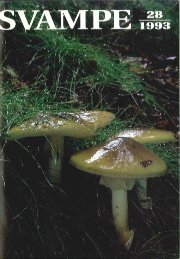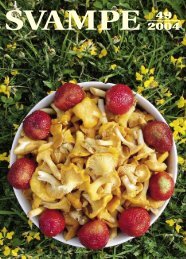Friesia X, 4-5
Friesia X, 4-5
Friesia X, 4-5
Create successful ePaper yourself
Turn your PDF publications into a flip-book with our unique Google optimized e-Paper software.
- 234 -<br />
Also found on wood collected at water's edge and stored in humid<br />
chamber.<br />
Substrate.<br />
P i cea, P inus and Salix.<br />
Collections.<br />
Jutland, Grønhøj 20.8.67 (1 ) ; 5.4 .69 (2) ; 26.8.69 (1).<br />
In addit ion t o the species of Ascomycetes and B asi dio m y cet es<br />
listed, several members of the Fung i imperfec ti were also collect ed at<br />
the Gr ønh øj locality. Among the most frequent were H elic oma maritimum<br />
LINDER (Fig.9u) and Pi r icauda pelagica JOHNSON (Fig. 9v).<br />
Both species generally occur on t he unde rside of wood which has<br />
remained undisturbed under moist conditions at the base of the dune<br />
for some time. Many collect ions, chiefly of the genera L epiosphaerui,<br />
Lulworthia and Pleospora , still remain to be treated.<br />
THE FREQUENCY OF THE F UNGI<br />
AT GR0NH0J, JUTLAND<br />
On the basis of the number of collections bearing fruit bodies, the<br />
frequency distribution of the marine fungi identified is shown in<br />
Table L<br />
Since the majority of collections were made at Grønhøj, the fungi<br />
from this locality are listed separately. Corollospora comata is clearly<br />
that marine ascomycete most frequently found. It is moderately conspicuous<br />
due to the approx. 0.5 mm large, dark fruit bodies on the<br />
surface of the often faded wood (Fig. 13). C. tubulata and Amylocarpus<br />
encephalouies, however, are of a more infrequent occurrence than<br />
would appear from Table 1. The large number of collections recorded<br />
of these two species is partly due to their large fruit bodies. The<br />
perithecia of Corollospora tubulata are about 0.5 mm in diameter and<br />
are conspicuous in the white sand, while Amylocarpus encephaloides<br />
bears perithecia of up to 3 mm in diameter. When present, these two<br />
species are almost certainly recorded. Corollospora maritima, with fruit<br />
bodies of only approximately 0.25 mm, is easily overlooked (Fig. 5).<br />
This species often grows in association with C. t rifurcata and should<br />
be ranked after C. comata. In investigations of spores in skum from<br />
sand coasts (North Carolina, Georgia, Tenerife), KOHLMEYER (1966)



